April 10, 2014
Good aggressives, bad invasives
First, update on freeze report. Before you shovel out that “dead” plant, hang on a bit, since we’re getting lots of surprises like chile tepin/pequin.
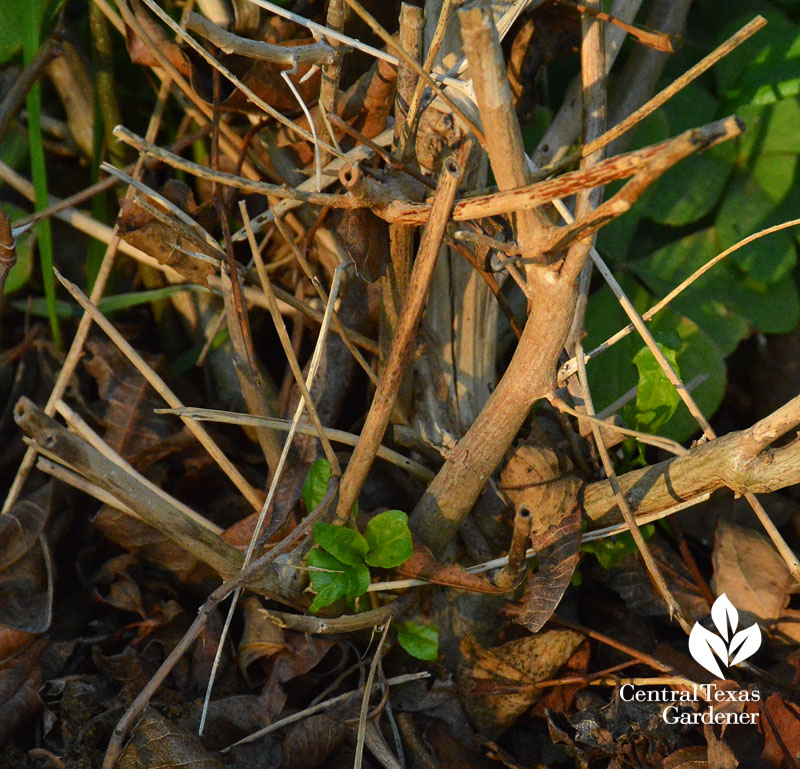
Birds spread the wealth, but it’s a bonus for all in part shade.
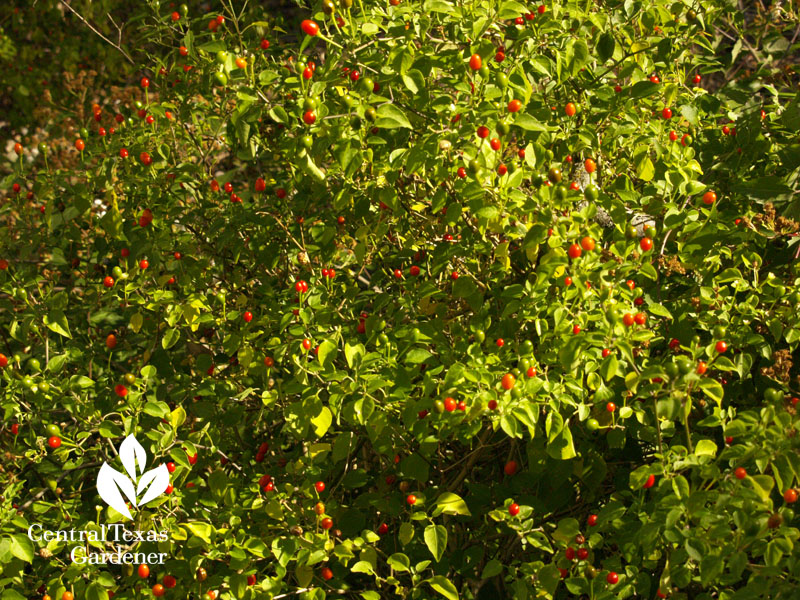
Lady Banks didn’t let me down after all.
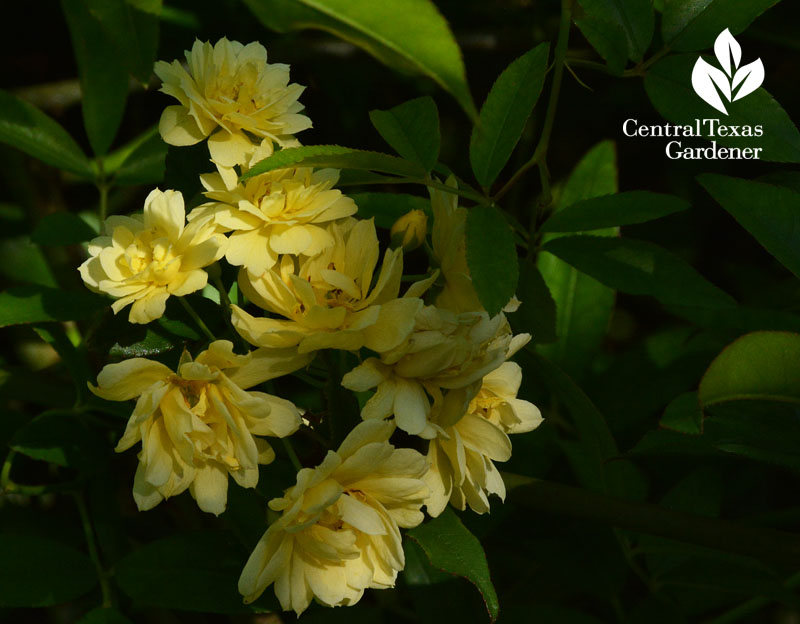
Bulb parade: late Dutch iris is a bonus! Here with native heartleaf skullcap reaching for the sky. That heartleaf will be all over the place next year. Good!
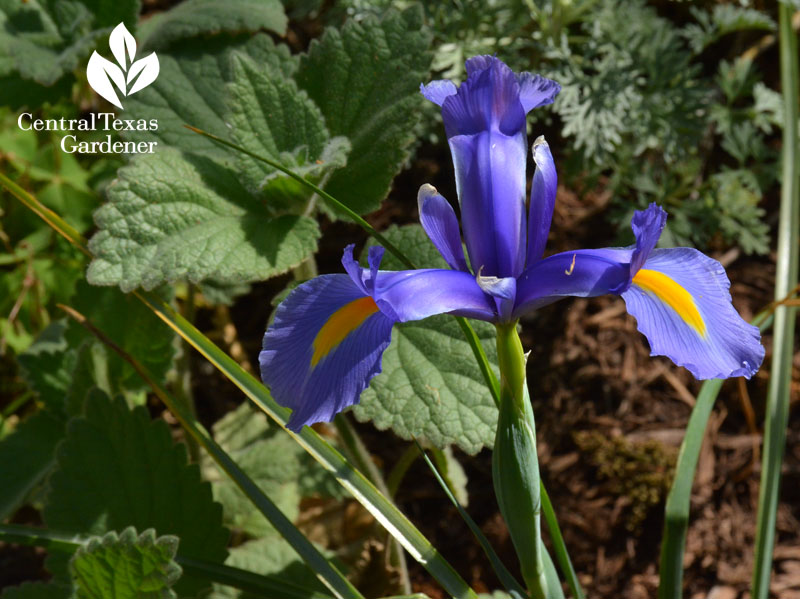
12° plus drought didn’t offend my yearling native Salvia roemeriana.
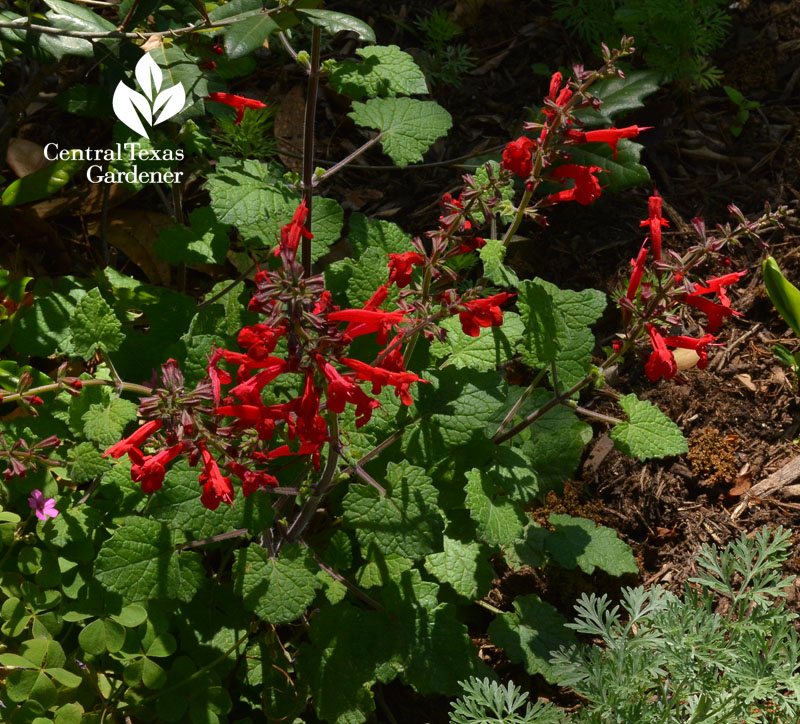
Yes, some people consider native salvias “invasive,” too, but they’re actually considered “aggressive” if they find the right spot. It’s all in your perspective. I say: the more the merrier to attract wildlife.
Some gardeners even yelp about “invasive” bluebonnets and California poppies. Well, everyone’s entitled to their opinion! These are certainly prettier in this front yard than lawn, that’s for sure.
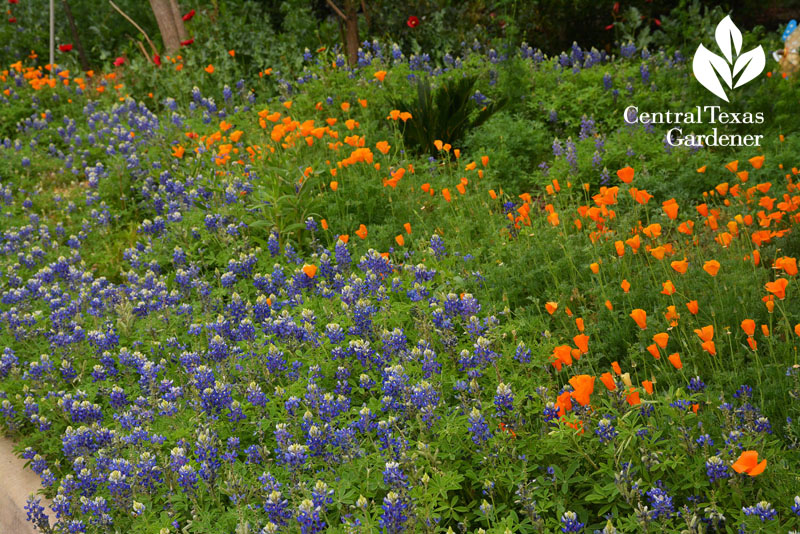
Native pink evening primrose walks over everything in its path, but attracts so many beneficial insects.
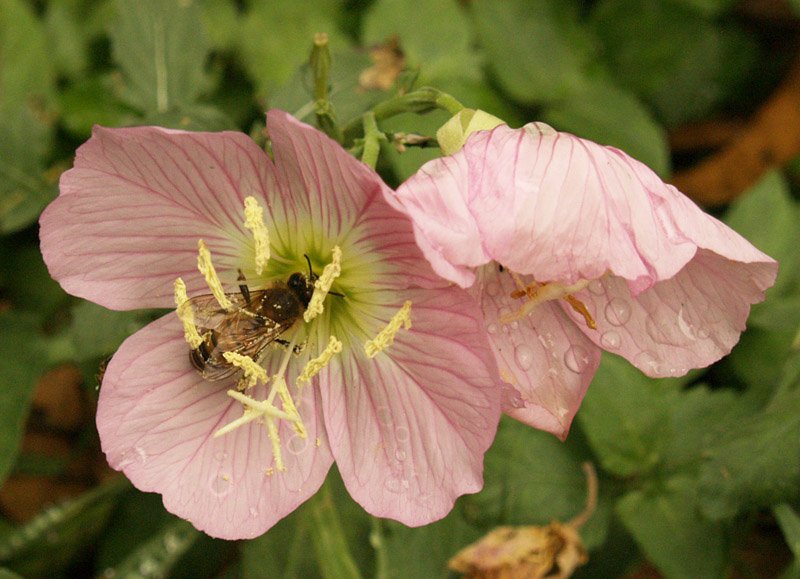
It’s a kick for me to see how they’ve moved around my garden to find their happy spot in sun: here where I took out grass.
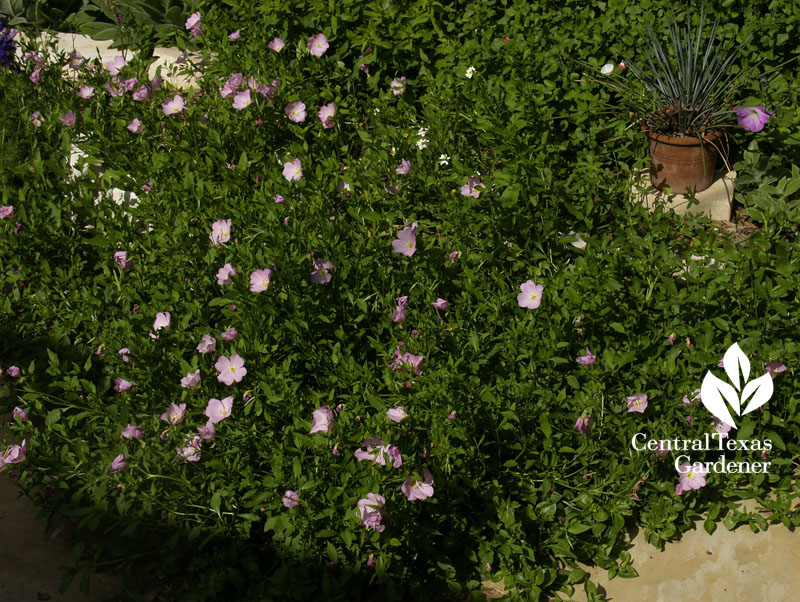
Native baby blue eyes (Nemophila menziesii) finds its happy spot in part shade. I lose it in spots that get too much shade, but it moves itself!
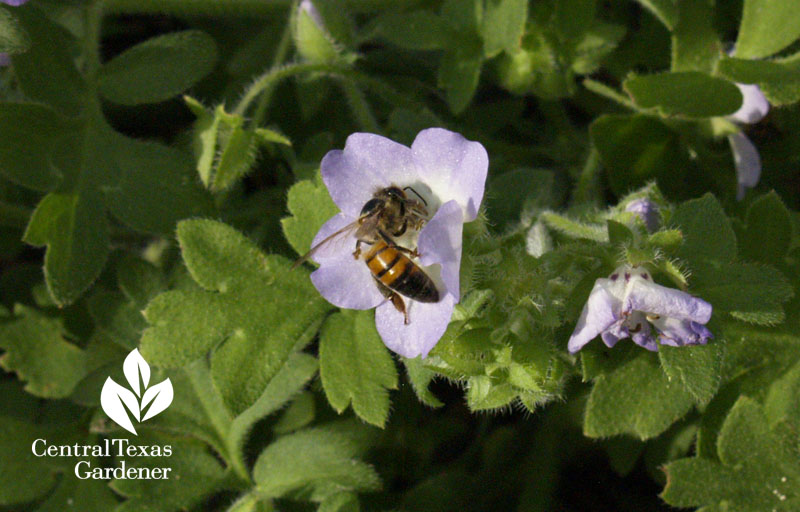
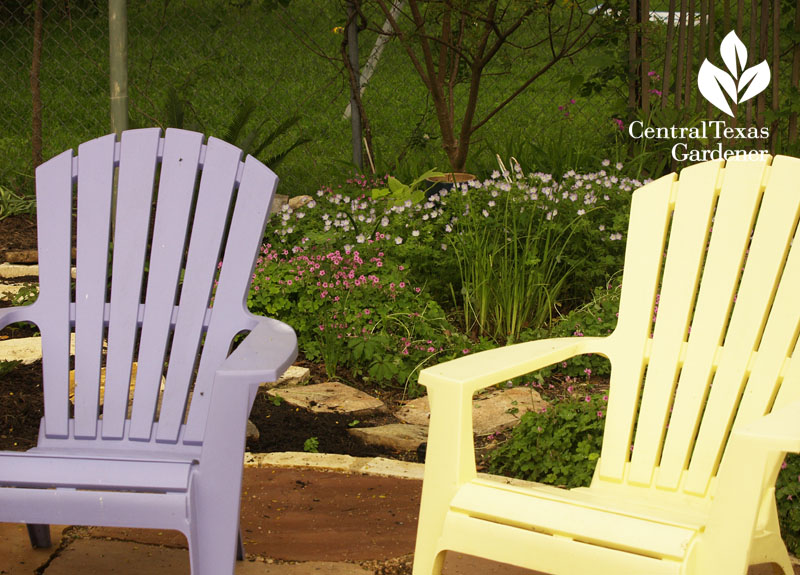
What a lovely combination with columbine.
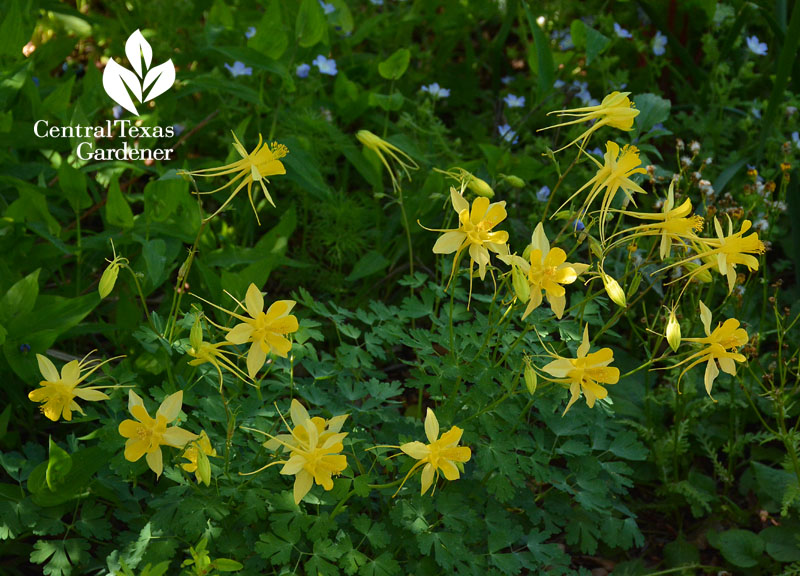
Quite a surprise to find native prickly poppy growing in this east Austin garden! Usually you see them in fields.
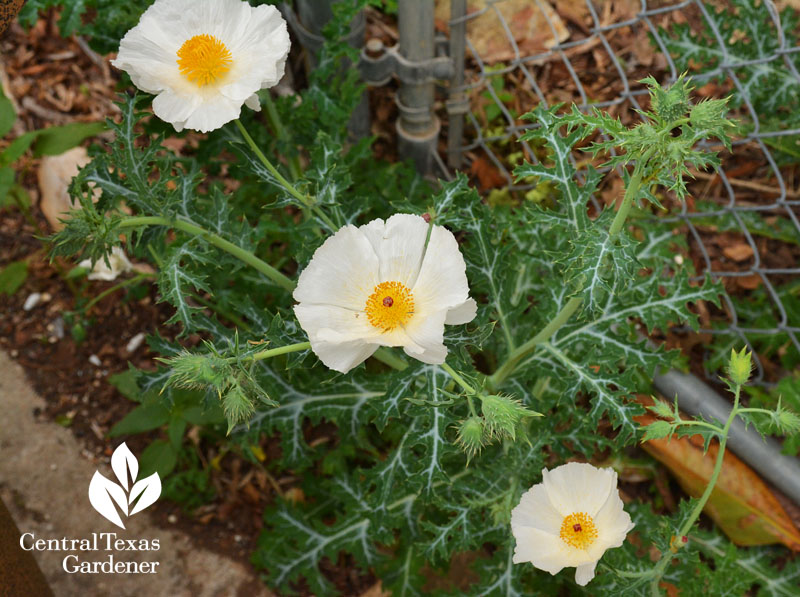
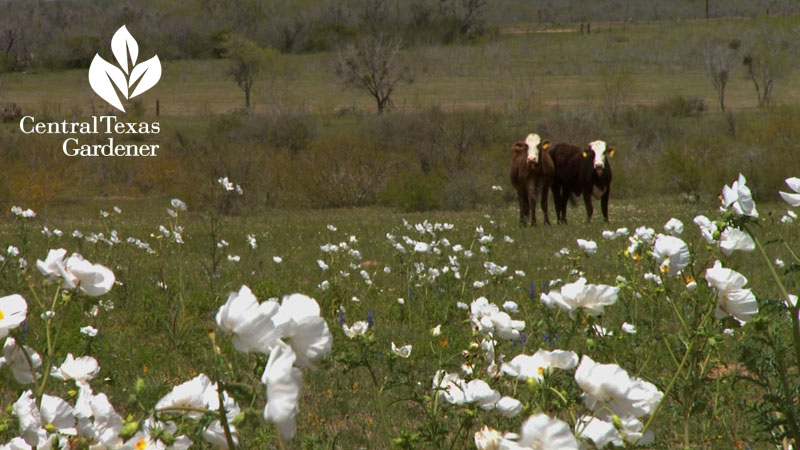
So why do we run for the shovel when milk thistle settles in our garden? I like the variegated foliage all winter. This year, I got a bee bonus, too.
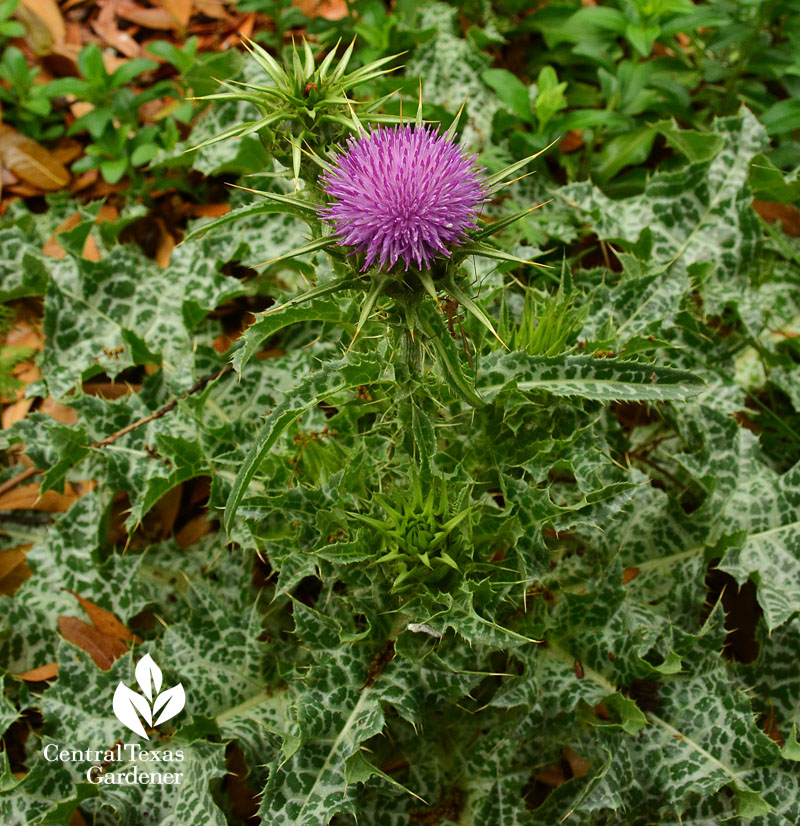
As gardeners, if exuberant plants take over, we can thin to pass along to friends who hanker for them. But when invasive species like ligustrum take over, it can take an army of volunteers to eradicate them from natural areas where they smother wildlife habitat diversity. Animals can’t live by ligustrums alone!
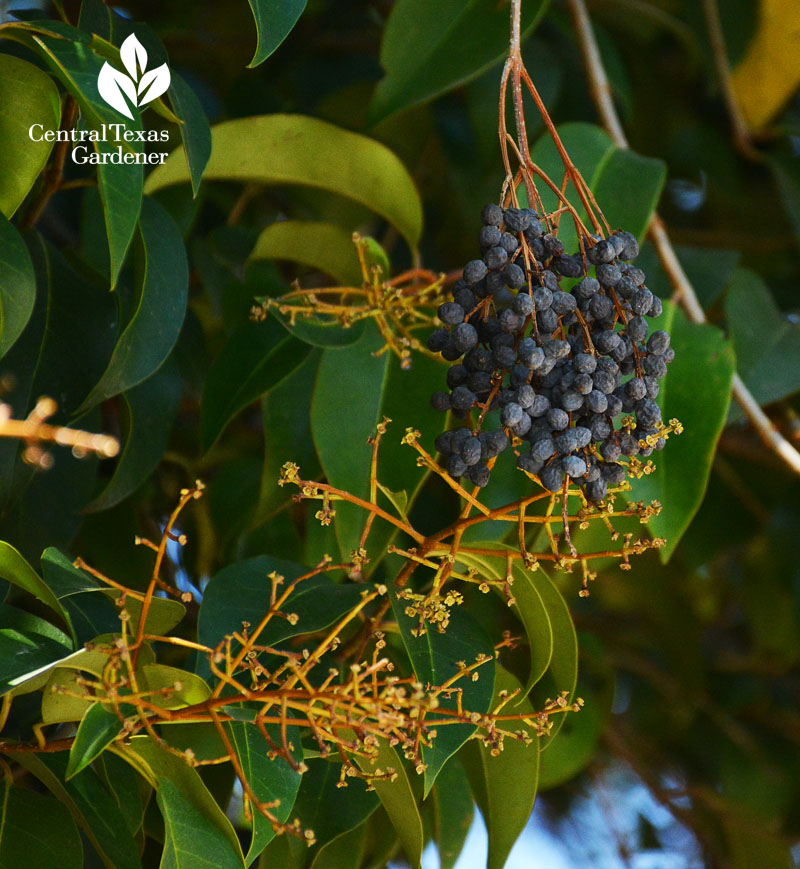
This week, Jessica Wilson from the City of Austin Watershed Protection Department joins Tom to swap invasives for much more appealing native plants that do the same job. For example, native cherry laurel instead of ligustrum.
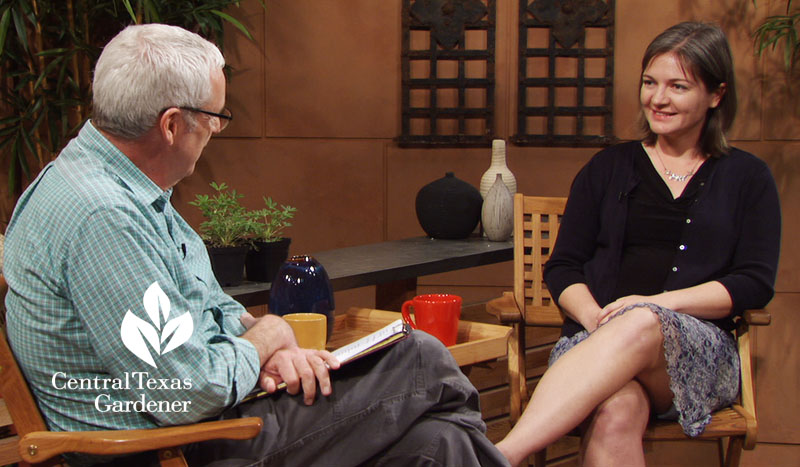
My house came with many on her list, like Japanese honeysuckle and ligustrums. We cut down our ligustrums for a mountain laurel hedge (from seed, no less) to hide a chain link fence. I planted crossvine to hide the fence until the mountain laurels grew up. Now we have a solid hedge and the crossvine is still there, even though it gets no extra water from me. I’ll tame it off the mountain laurels (along with passion vine), don’t worry.
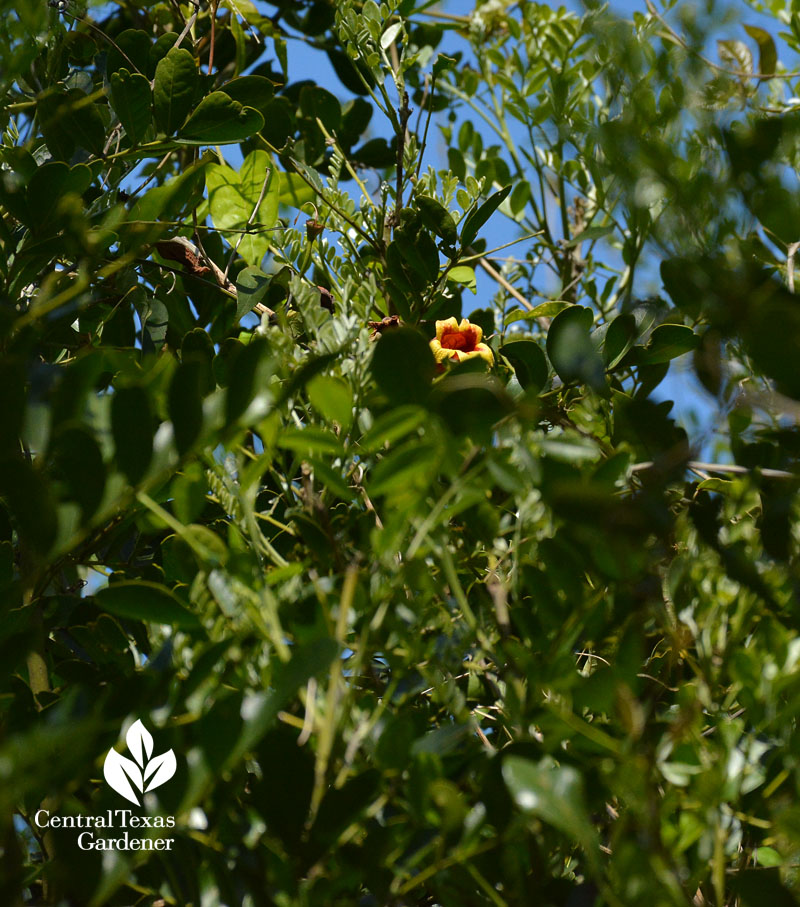
Jessica picks options for elephant ears, nandina, vitex and devilish catclaw vine.
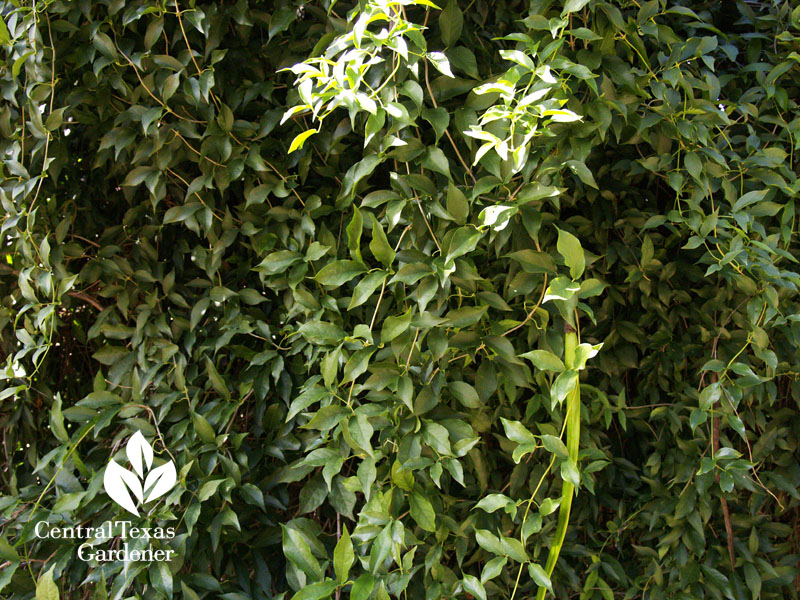
Find out more about invasive plants.
In case you missed it last year, Daphne explains why it doesn’t really take 100 years for a century plant to bloom.
At Mayfield Park, these yuccas are sending out their flowers. But they’re not dying; just losing their leaves as they trunk up.
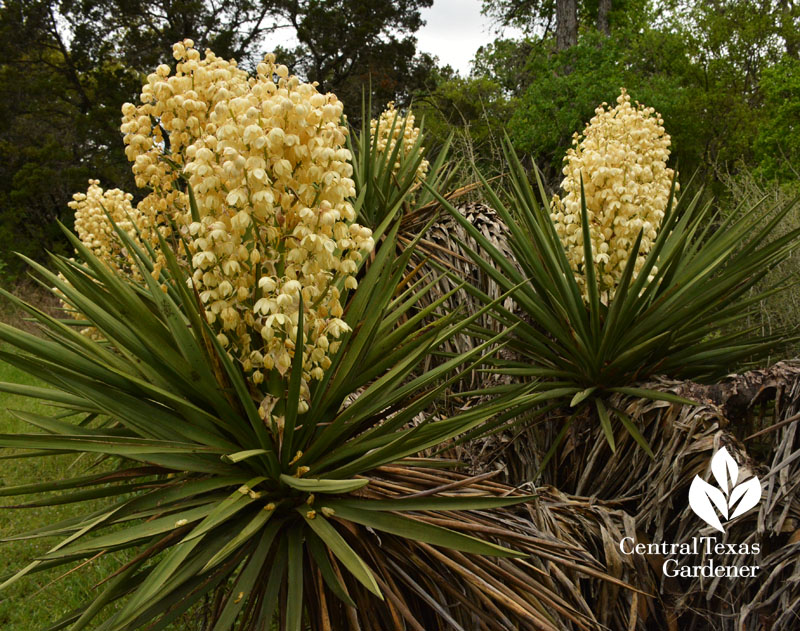
Along with dumping invasives, the best thing I did for my garden in clay and even “red death sandy loam” was to pile on leaves, compost (some bought, some made) and mulch. Over time, there are spots where I can dig with my hands.
Any compost is good, but this week William Glenn from Garden-Ville compares the options, including biosolids.

On tour, Laura and Andy Stewart worked with David Mahler of Environmental Survey Consulting to rescue their in-town hillside from invasive invasion.
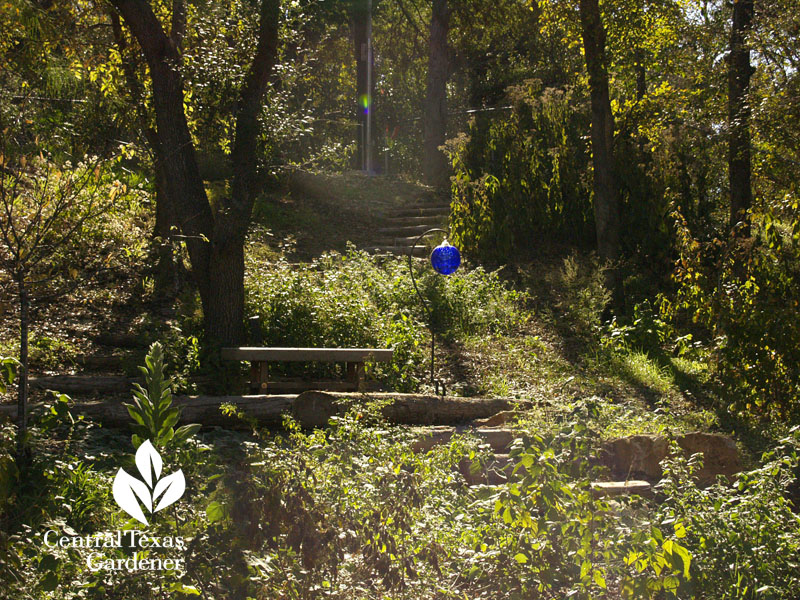
Now, treasures like rock penstemon can breathe again.
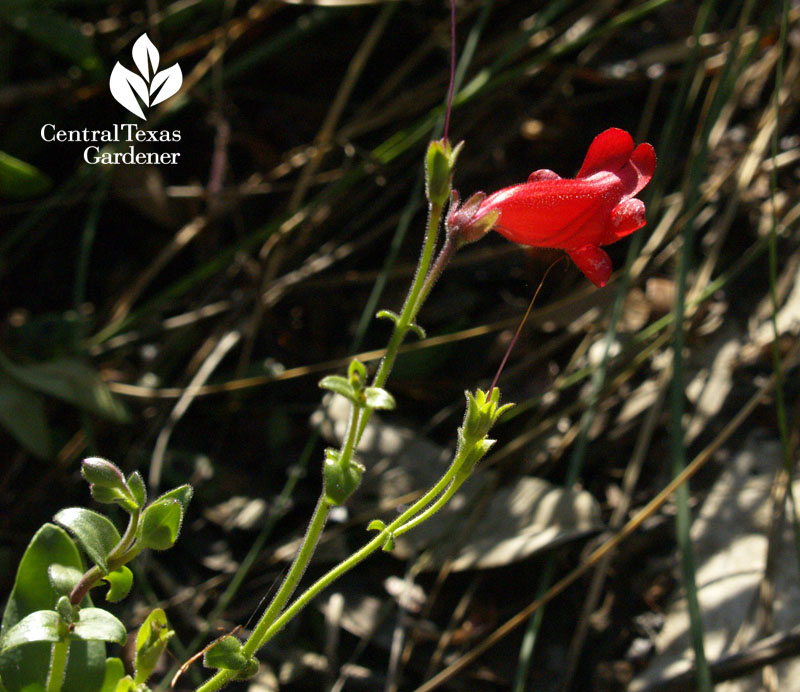
Miró Rivera Architects beautifully melded their house design into the hillside in a total indoor/outdoor experience.
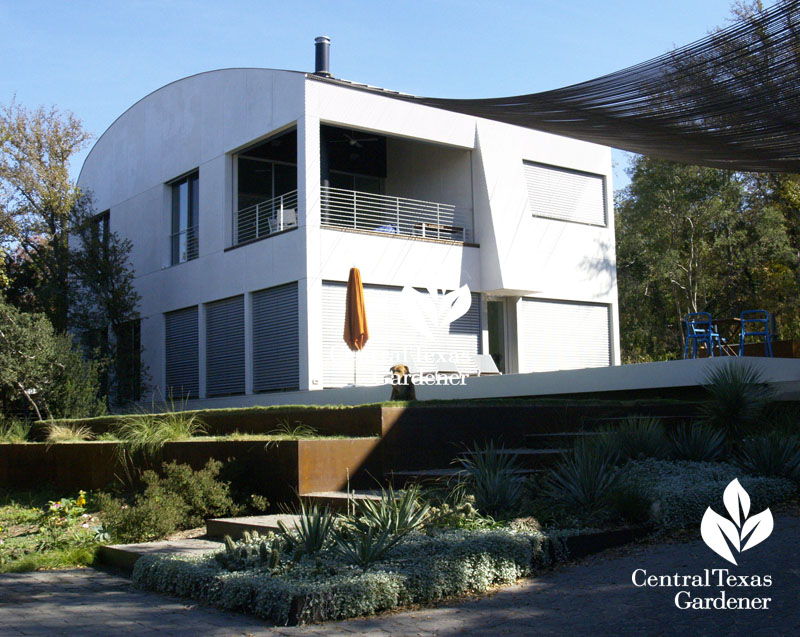
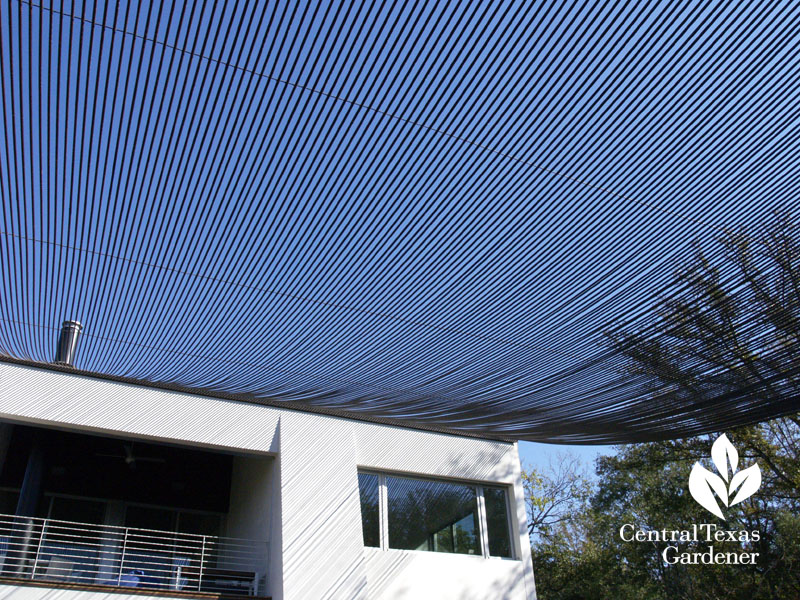
Take the tour now!
Thanks for stopping by. See you next week as we preview the Master Gardener tour. Linda
tags:







